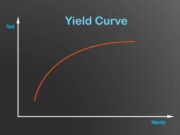
Deciding whether to invest in a traditional IRA or a Simple IRA can be confusing. Both have their pros and cons, which can make it difficult to decide which is the best option for you. In this blog post, we will break down the differences between these two investment options so that you can make an informed decision about which is right for you.
What is an IRA and how does it work?
An IRA, or Individual Retirement Account, is a specialized type of savings account that allows you to save for retirement in a tax-advantaged way. There are two main types of IRAs: traditional IRAs and Roth IRAs. With a traditional IRA, you make contributions with pre-tax dollars, and your account grows tax-deferred. This means that you won’t pay taxes on the money in your account until you withdraw it in retirement. With a Roth IRA, you make contributions with after-tax dollars, and your account grows tax-free. This means that you can withdraw your money in retirement without paying any taxes on it.
The difference between a Simple IRA and Traditional IRA
When it comes to saving for retirement, there are a number of different options to choose from. Two of the most popular are the Simple IRA and the Traditional IRA. Both have their own advantages and disadvantages, so it’s important to understand the difference between them before making a decision.
The Simple IRA is designed for small businesses with fewer than 100 employees. Employees can contribute up to $12,500 per year, and employers must match contributions up to 3%. Contributions are tax-deductible, and earnings grow tax-deferred until withdrawal. The main disadvantage of the Simple IRA is that it has lower contribution limits than the Traditional IRA.
The Traditional IRA is available to anyone with earned income. There are no employer contribution requirements, and employees can contribute up to $5,500 per year (or $6,500 if you’re over age 50). Contributions are tax-deductible, and earnings grow tax-deferred until withdrawal. The main disadvantage of the Traditional IRA is that withdrawals made before age 59 1/2 may be subject to a 10% early withdrawal penalty.
Both the Simple IRA and Traditional IRA have their pros and cons, so it’s important to evaluate your individual needs before deciding which one is right for you.
Who can open an IRA account and what are the benefits of doing so?
Any U.S. citizen aged 18 or older with earned income can open an IRA account. The benefits of doing so are numerous. For one, an IRA offers tax-deferred growth of your investment, meaning you won’t have to pay taxes on any gains until you start making withdrawals in retirement. Additionally, many employers offer matching contributions to employees who open an IRA, further boosting your savings. And finally, IRAs offer flexibility and control when it comes to how and when you take distributions in retirement. For all these reasons, opening an IRA is a smart choice for anyone looking to secure their financial future.
How much can you contribute to an IRA each year, and is there a penalty for withdrawing funds before retirement age?
For 2020, the contribution limit for traditional and Roth IRAs is $6,000. If you’re 50 or older, you can contribute an extra $1,000, for a total contribution limit of $7,000. If your modified adjusted gross income (MAGI) is below a certain level, your contribution might be deductible. If your MAGI is above that level, your contribution might not be deductible. With a Roth IRA, your contributions are never deductible, but qualified distributions are tax-free.
You can withdraw funds from your IRA at any time, but if you’re younger than age 59 1/2, you’ll generally owe a 10% early withdrawal penalty. There are some exceptions to this rule, such as using the money to pay for qualified higher education expenses or certain types of medical insurance premiums. You’ll also owe taxes on any portion of a distribution that represents taxable income. With a Roth IRA, you can withdraw your contributions at any time without owing taxes or penalties. But if you withdrawal earnings before age 59 1/2, you’ll generally owe taxes and penalties unless an exception applies.
Should you choose a Simple IRA or Traditional IRA for your own savings needs?
If you’re like most people, you want to make the most of your retirement savings. But with so many different types of retirement accounts available, it can be difficult to know where to start. Two of the most popular options are the Simple IRA and the Traditional IRA. So how do you decide which one is right for you?
The Simple IRA is ideal for anyone who is self-employed or who works for a small business. It allows you to contribute up to $12,000 per year (or $15,000 if you’re over 50), and your contributions are tax-deductible. The money in your account grows tax-deferred, and you don’t have to pay taxes on it until you retire.
The Traditional IRA is best for people who have a 401(k) or other employer-sponsored retirement plan. You can contribute up to $5,500 per year (or $6,500 if you’re over 50), and your contributions may be tax-deductible. Like the Simple IRA, the money in your account grows tax-deferred, and you don’t have to pay taxes on it until you retire.
Both the Simple IRA and the Traditional IRA have their own unique benefits, so it’s important to consider your own specific needs before making a decision. Whichever type of account you choose, you’ll be well on your way to a comfortable retirement.


































